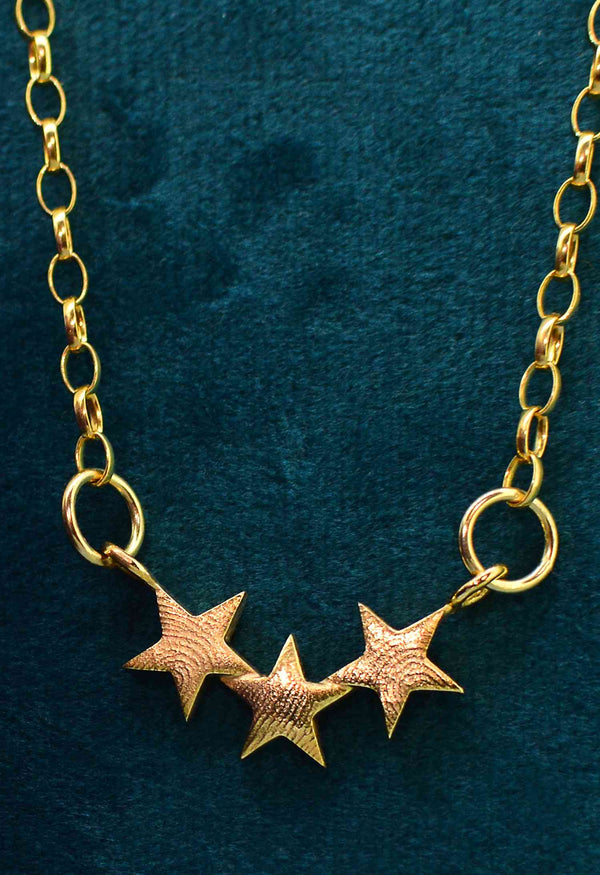Your Cart is Empty
~ Waiting List in Operation ~ Please Ask Before Ordering ~
~ Personalised jewellery to treasure forever ~
~ Waiting List in Operation ~ Please Ask Before Ordering ~
~ Personalised jewellery to treasure forever ~

JULY IN ENGLAND – FOLKLORE, FACTS AND THINGS TO DO
July 01, 2018 7 min read
July is a relaxing and optimistic month in England, as the long school holidays begin and families enjoy spending time together. Harvest has begun in the fields, so the thunderbugs won’t be around for too much longer in the countryside.
The weather is calm and warm, and the deep green of summer has settled into gardens, parks and country landscapes. There are also plenty of things to see and do in July, so it’s an ideal time for getting out and about with family and friends.
Birthstone
If your birthday falls this month, your birthstone is the ruby. One of the most precious and best-loved gemstones, rubies are known for their rich red colour. They are becoming increasingly popular in engagement rings, and are said to bring good fortune and protect the wearer from evil.
Birth flowers
July births are celebrated with the larkspur and the water lily. The beautiful larkspur is named for the shape of its flowers, as if you look closely, each flower looks as if it is wearing a tiny spur. Larkspurs are renowned for their attractive displays of different colours, which each have different meanings: white for happiness and levity, pink for fickleness, and purple for a first love.
July’s other birth flower is the water lily, which has inspired numerous artists, most famously Claude Monet. The water lily is known for its beautiful pink blooms and large, round lily pads, which provide essential shade in the water for frogs and fish. It is considered a symbol of majesty.
Celebrations
- It might seem ironic, but increasing numbers of British people now join in the celebrations of American Independence Day on July 4th. Celebrations are held at the American Museum in Bath, many London restaurants host a special evening of American cuisine, and firework displays can be seen in various cities throughout the UK.
- Midsummers Day, a day for outdoor celebrations, feasts and bonfires wasn’t always on the 24th of June. All the way back in the 18th century, people in England used to celebrate it on the 5th of July. This was changed by Pope Gregory the 13thin the 16th century when he moved everyone across from the Julian calendar to the more astronomically correct Gregorian calendar, but we stubbornly refused to accept the change for a couple of hundred years.
Finally, by the 18th century, Midsummers Day was moved to its new date, 12 days earlier on the 24th of June. The history books record the existence of the Old Midsummers Day on the 5th, but we don’t really celebrate it anymore.
- The 15th of July is St Swithen’s Day and is a day swirling with superstition.
A Bishop of Winchester, St Swithen was born around the year 800 and died in 863 and that’s when things got interesting.
He had originally asked to be buried outside his cathedral so the rain could fall on him. However, a while later, for some unknown reason, he was moved inside the building.
The story goes that he was so unhappy with the move that it rained absolutely constantly for 40 whole days, until he was moved back outside again. So we have the proverb:
St. Swithin's day, if thou dost rain,
For forty days it will remain;
St. Swithin's day, if thou be fair,
For forty days 'twill rain na mair.
So many miracles were said to occur at the burial site that the resident monks got fed up of reporting them.
Birds and animals
July is a time when you might see mole hills in your garden, although you are highly unlikely to spot any of the shy, subterranean-dwelling creatures themselves. Other animals can be sighted more easily at this time of year, however, particularly hedgehogs, which tend to appear in the evenings.
The birds are quieter this month, as many fledglings have flown the nest, but in coastal areas, sea birds are still rearing their young.
If you live in the countryside, you should now hear the familiar song of grasshoppers living in the fields.
July also offers a great opportunity for spotting many different species of butterfly and moth and if you are off to see the sea, you might spot a few dolphins, particularly if you are in the vicinity of Cardigan Bay in West Wales, home of Britain’s largest pod of dolphins.
Plants and flowers
As the corn begins to ripen in the fields, red poppies are at their best. Meadow flowers are everywhere. Knapweed and traveller’s joy can be found in the hedgerows, while riverbanks are alive with yellow flag iris and the beautifully-perfumed meadowsweet.
Gardens are putting on a stunning display in July too, with fuchsias and buddleia lighting up in shades of pink and purple.
Now is the perfect time to visit your local lavender fields as the lavender should be at is purple, aromatic best and sunflowers should be starting to turn their faces to the sky.
Things to cook
July is the month for picking your own berries. Fruit is starting to ripen in the hedgerows and Pick Your Own Fruit farms should be open for business as Strawberries, raspberries, blackcurrants, cherries and more are all ripe for the picking.
You are seriously spoiled for choice with things to cook. July is one of the busiest times in the kitchen for making jams and syrups. And it’s the perfect time to bake fresh fruit pies and crumbles, or even homemade ice cream and sorbet.
The list of deserts is endless. Pavlova’s, Eton Mess, cheesecakes, sundae’s, trifles, or a traditional Victoria sponge.
If you’re feeling thirsty, whip up a refreshing jug of pink raspberry lemonade on ice. Something more alcoholic? Blitz some strawberries or raspberries into a chilled glass of prosecco for fresh, fruity bubbles.
Celebrate the Fourth of July with a traditional American-style barbeque! Hamburgers and hot dogs are essential Independence Day fare, garnished with plenty of onions, ketchup and mustard, and served with side helpings of corn-on-the-cob, baked beans and potato salad.
Conclude your feast with a classic American apple or cherry pie.
Of course, if you want to be slightly healthier, there are plenty of vegetables in season, including carrots, courgettes, lettuce, onions, peas, peppers, beans, spring onions, tomatoes and spring greens.
Things to make
With lavender being pretty much everywhere in July, lavender crafts are a must.
Lavender oil, soap, bath bombs, candles, scented draw sachets and even gin are all relatively easy to make with no large or expensive equipment required and they all smell utterly divine.
Meadow flowers are everywhere too, so it’s the perfect time to press or preserve them for scrapbooks, photo albums or other crafting activities.
Make some into homemade pot pourri, wedding confetti, or add them to handmade bath and body products. Edible flowers, such as Chamomile can even be made into fresh tea.
Summer flower wreaths are some of the most beautiful, so if you planted enough earlier in the year and have lavender or wild flowers to spare, turn them into a stunning creation for your front door, or even a sweet summer crown.
The 7th of July is National Scarecrow Day, so you could always have a go at making something fun to cheer up your garden. If you don’t live in the countryside with easy access to straw bales, it’s usually pretty easy to find at most pet stores.
Or have a go at making a traditional pagan corn dolly. An old symbol of fertility and good luck and originally made to thank Mother Nature for the harvest.
Attract butterflies to your garden this month by making a butterfly feeder using an upturned plastic bottle with the end cut off, filled with a sugar water mixture (100ml warm water, 1 teaspoon of white sugar and 1 teaspoon of soy sauce) and pieces of chopped up fruit.
Decorate the bottle in bright colours and hang it upside down in your garden to attract a wide variety of beautiful butterflies.
Out in the garden, with the heat of the summer, July is rather a quiet month for planting fruit and vege.
Herbs of most sorts will still grow well in pots and lettuces, spring onions and radishes will still grow if you pop them into the ground and water them well, ensuring your salad supplies don’t run out.
Things to do
Wow July is busy. If you enjoy folk and music festivals that it.
- There are festivals dotted all around the country with the biggest including Wireless Music Festival in Finsbury Park London from the 5th – 7th; Liverpool International Music Festival in Sefton Park, Liverpool from the 20 – 21st and Latitude music festival in Henham Park, Suffolk, from the 18th – 21st.
Latitude is by far the most family friendly event. If you’re looking for a perfect family day out or a short weekend break, there’s activities and entertainment to keep everyone from tots to teens happy.
- You should also check your local calendar and Facebook groups, as there are many different musical and cultural events happening throughout England in July.
- Looking for something slightly more grown up (or more refined), take a look at the Henley Royal Regatta in Oxfordshire. The annual rowing race takes place along a one-mile stretch of the River Thames from the 3rd – 7th of July, with some of the best rowers competing from around the world.
- If you’re a tennis fan, then July is also the month for you. Wimbledon starts on the first and runs all the way through to the 14th. Strawberries and Pimms anyone?
- Looking for a good excuse for a long lazy afternoon? It’s Teddy Bear’s Picnic Day on the 14th, so take some time out to breathe and enjoy some time either in your back garden or down the local park. Bring a big blanket, a few teddy bears and plenty of fresh summer fayre to snack on.
- Love flowers, crafts, workshops, shopping and garden parties? Me too!!
The Royal Horticultural Societies Hampton Court Garden Festival takes place between the 2nd – 7th of July at Hampton Court Palace, while their annual Flower Show at Tatton Park in Cheshire runs from the 17th – 21st.
- July is a great time to visit England’s capital, London for a spot of general sightseeing (If you don’t mind all the other tourists of course).
The Queen’s residence, Buckingham Palace, opens its doors to visitors for the summer season this month on the 20th, and you can also take in a wide variety of musical performances at the BBC Proms from the 19th onwards.
- Finally, as it’s the start of the summer holidays and you’re no longer tied to the school-run, take a trip to your nearest coast. July is the perfect month for sandcastles, crabbing and sea shell collecting, although it might not yet be warm enough to swim in the sea.
Leave a comment
Comments will be approved before showing up.
Subscribe
Sign up to get the latest on sales, new releases and more …

Join the Club
WE'RE SO PLEASED TO SEE YOU!
Stay a while and look around.
While you're here, why not subscribe to our newsletter?We'll give you £20 off your first order, VIP access to new products, and access to our very special sample sales.We promise not to annoy you (honest).
